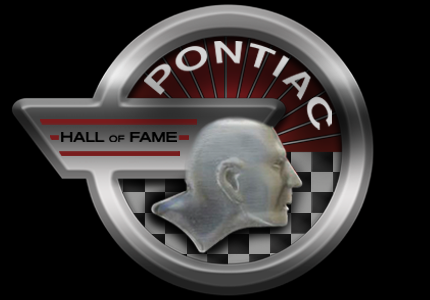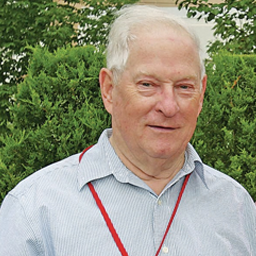Russ Gee --- May 31, 1927 - August 30, 2018
Times Nominated: 1
Year Inducted: 2018
Nominated Year(s): 2018
Category: Pontiac Ambassador
Russ was doing his job one Saturday when newly appointed Pontiac General Manager Bunkie Knudsen and Chief Engineer Pete Estes showed up and wanted to drive the prototype ’57 Pontiacs with the new 347ci V-8.
(Courtesy of Chris Phillip, from an article written by Herb Adams for High Performance Pontiac magazine)
Russ said they spent a couple hours racing each other on the Proving Ground roads. When they came back to the Pontiac garage, they told him that Pontiac was going stock car racing, and Russ just became the engineer in charge of the program.
Russ said they spent a couple hours racing each other on the Proving Ground roads. When they came back to the Pontiac garage, they told him that Pontiac was going stock car racing, and Russ just became the engineer in charge of the program.
Russ didn’t know much about racing, but he knew Pontiacs and had enthusiasm for getting things done. To gain knowledge about racing Pontiacs, he started running ’57s as fast as they would go. (He remembers getting them to go over 150 mph.) Of course, the early Pontiac overhead-valve V-8s were not designed for top-speed racing, so there were many failures. While Russ was solving the car problems, the Pontiac engine engineers were working on upping the horsepower. The result of the combined efforts of Russ and the other Pontiac engineers was that Pontiac ruled the NASCAR tracks from 1957 to 1962.
In 1968, Russ headed Pontiac’s dyno lab. After Pontiac engineer Herb Adams received the assignment to develop the Pontiac 303, he went to Russ and asked him, “Can we use a dyno?”
Russ gave Adams exclusive use of Pontiac Dyno Room No. 2. Herb says, “I think Russ clearly saw the connection between Pontiac’s high-performance engine programs and its dominance in motorsports, and that the adage ‘Win on Sunday, sell on Monday,’ was true.”
After Adams and Pontiac Special Projects built a production-proposal 366 engine using a short-deck 303 block, Ram Air IV heads, and cast-iron exhaust manifold, Russ recognized the opportunity to retire the Pontiac 350 and 400, and replace both of them with the 366 as the large-volume production engine. “The 400 was one of my favorite engines, but I think there was a downsize campaign going on in the entire automobile industry,” Russ recalls. “That could have given the 366 the window of opportunity it needed to become Pontiac’s bread-and-butter engine.”
Russ and Adams made several proposals to Pontiac management to get approval to work on the project, eventually showing it to Pontiac General Manager Jim McDonald. McDonald subjected what Special Projects believed was the best idea in Pontiac V-8 history to a slow death. Adams credits Russ with another idea: Why not take what we learned on the 303 and 366 race engines and apply them to a high-performance 455? The result was Pontiac’s legendary SD-455 engine.
Russ stayed with Pontiac until 1979, and then transferred to Chevrolet’s high-performance team. While at Chevy, with authority over Pontiac regarding powertrain, Russ issued the corporate order to turbocharge the Trans Ams and Firebird for ’80 and ’81.












